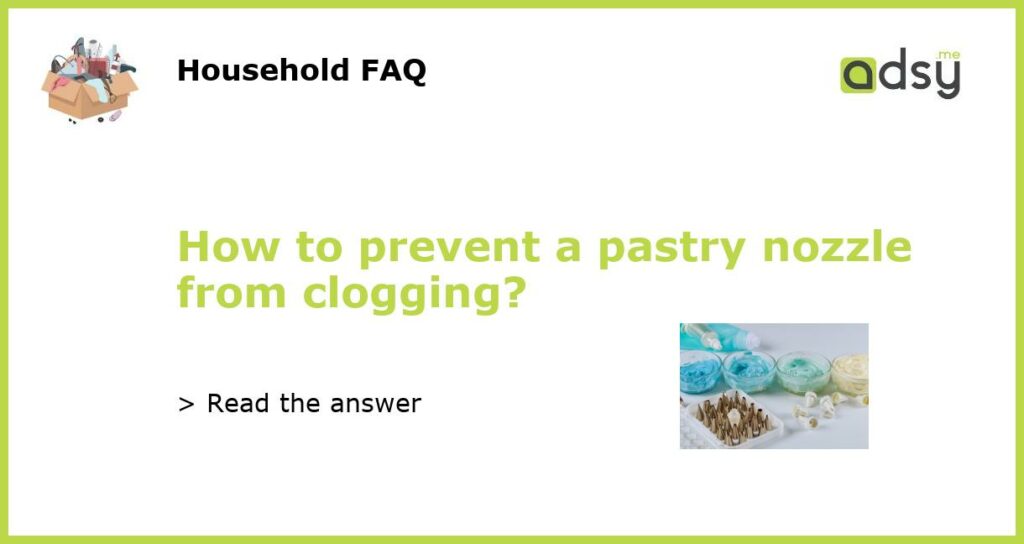Understand the Basics of a Pastry Nozzle
Before we dive into preventing a pastry nozzle from clogging, it’s essential to understand how it works. A pastry nozzle, also known as a piping tip, is a small metal or plastic attachment that fits onto the end of a pastry bag. It is used to shape and decorate various baked goods, such as cakes, cookies, and pastries.
The nozzle features a small opening at the end, which allows the batter or icing to flow out in different shapes and designs. As you can imagine, this opening can easily become clogged if not properly maintained, affecting the performance and appearance of your baked goods.
Choose Your Ingredients Wisely
One of the main reasons why a pastry nozzle can get clogged is due to the ingredients used. Certain ingredients, such as chunky fruit purees, chocolate chips, or finely ground nuts, can easily clog the nozzle. To prevent this, make sure to thoroughly strain your ingredients before using them in your batter or icing.
If you’re working with particularly thick batters or icings, you may want to consider using a larger nozzle with a wider opening. This will allow for better flow and minimize the risk of clogging. Additionally, avoid using ingredients that are prone to clumping, as this can also lead to nozzle blockages.
Maintain Proper Consistency
The consistency of your batter or icing plays a significant role in preventing clogging. If the mixture is too thick, it will have difficulty passing through the nozzle smoothly, leading to blockages. On the other hand, if the mixture is too thin, it may flow too quickly, making it challenging to control the design.
It’s essential to find the right balance when it comes to consistency. For batters, aim for a texture that is neither too runny nor too stiff. For icing, it should be thick enough to hold its shape but still easy to pipe. Adjust the consistency by adding small amounts of liquid or additional dry ingredients until you reach the desired texture.
Properly Clean and Maintain Your Nozzle
Regular cleaning and maintenance are crucial in preventing clogs and ensuring the longevity of your pastry nozzle. After each use, remove any excess batter or icing from the nozzle by rinsing it with warm water. Use a small brush or toothpick to gently remove any stubborn residue.
When it comes to deeper cleaning, separate the nozzle from the pastry bag and soak it in warm, soapy water for a few minutes. Scrub the nozzle gently with a brush or sponge to remove any buildup. Rinse thoroughly and allow it to air dry completely before storing it.
It’s important to note that different types of nozzles may require specific cleaning techniques. Always refer to the manufacturer’s instructions for proper care and maintenance.
Use Proper Piping Techniques
Lastly, using proper piping techniques can help prevent nozzle clogging. When piping, apply even pressure to the pastry bag while maintaining a consistent speed. Sudden bursts of pressure or erratic movements can cause the batter or icing to splatter, potentially leading to clogs.
It’s also essential to take breaks during prolonged piping sessions to give the batter or icing time to settle. This will help prevent air pockets from forming, which can disrupt the flow and increase the risk of clogging. If you notice the flow slowing down or becoming uneven, take a moment to clean the nozzle and adjust the consistency if needed.
By following these tips and techniques, you can significantly reduce the chances of your pastry nozzle getting clogged. Remember to choose your ingredients wisely, maintain proper consistency, clean and maintain your nozzle regularly, and use proper piping techniques. With a bit of care and attention, your baked goods will come out looking beautiful and professional every time.






